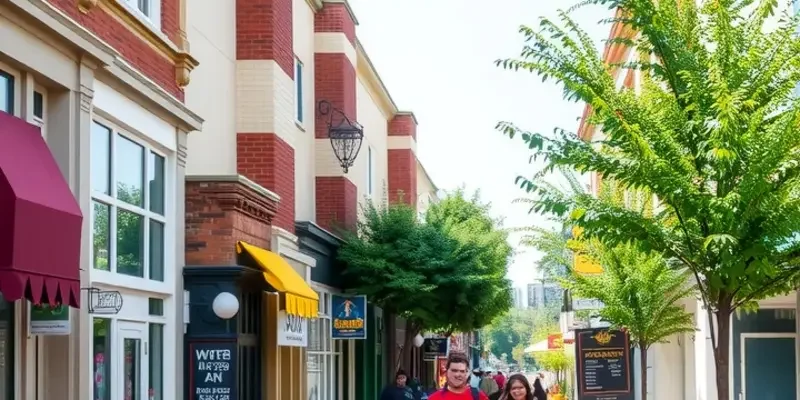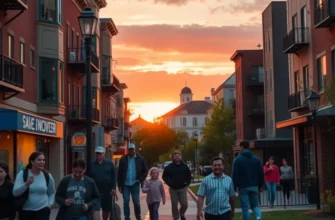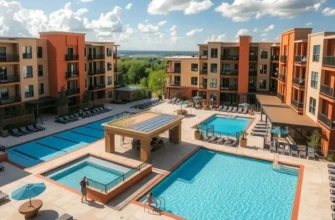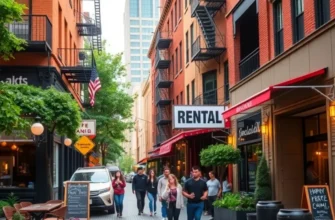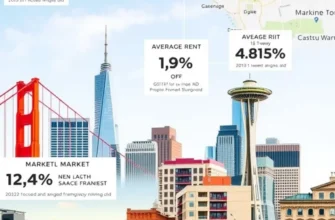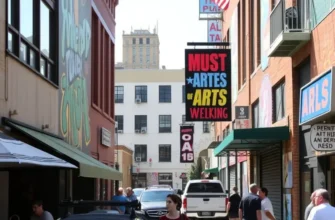Finding a home in a bustling city offers endless possibilities, especially when you choose a walkable neighborhood. Nestled within urban landscapes are vibrant areas where everything you need is just a friendly stroll away. These neighborhoods not only offer convenience but also foster a sense of community, making them attractive to young professionals, students, couples, families, and mobile workers alike. As cities evolve to become more pedestrian-friendly, the best spots for renters are those where schools, parks, shops, and dining are all within reach—ideal for enjoying vibrant city life while minimizing the need for a car. Whether you’re relocating for a new job, pursuing your studies, or seeking a lively community to settle in, understanding the walkability of rental markets is vital. Let’s navigate through some of the most walkable neighborhoods in major U.S. cities, where you can find your next home without compromising on lifestyle.
The Top Destinations for Walkable Living
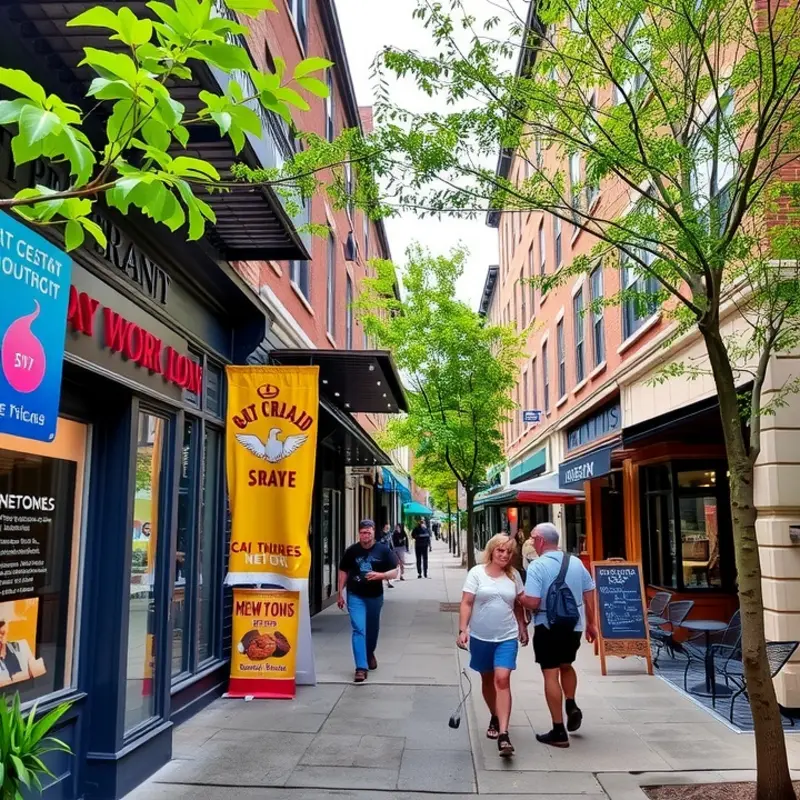
Urban living offers many perks, but the charm of walkable neighborhoods stands out as a major draw for residents. The ability to stroll through vibrant communities enhances the quality of life, and several U.S. cities excel in providing such environments. If you’re seeking to lease in a locale where amenities are a leisurely walk away, exploring these neighborhoods might just lead you to your perfect rental.
Portland, Oregon – Pearl District:
Portland’s Pearl District is a hub of culinary delights, art galleries, and trendy shops. The revitalized warehouse buildings add an industrial charm, perfect for young professionals and families alike. Residents find it easy to navigate with ample crosswalks and bike lanes. Iconic spots such as Powell’s City of Books and the Portland Institute for Contemporary Art are within reach. Many apartments feature open floor plans and sleek designs, catering to modern living standards.
New York City, New York – West Village:
When it comes to walkability, few places rival New York City. Nestled in Lower Manhattan, West Village offers a blend of historic brownstones and vibrant nightlife. The cobbled streets and quaint cafes make for picturesque strolls. Young families will enjoy the proximity to Hudson River Park, perfect for weekend picnics or jogging. Rental options range from classic low-rise apartments to luxury condos overlooking the skyline.
Austin, Texas – Downtown:
Known for its music scene, Austin’s Downtown neighborhood stays alive with entertainment options. From live concerts to exuberant festivals, there’s always something to explore. Young professionals enjoy the convenience of being close to workspaces and event venues. Visit local spots such as the Austin Art Garage for unique finds. The rental scene is diverse, with lofts, studios, and family-friendly accommodations available. Check out some local guides for apartments near the University of Texas.
Boston, Massachusetts – Back Bay:
Back Bay stands out with its Victorian brownstones and high-end shopping streets. Whether your day involves a stroll through the adjacent Boston Public Garden or exploring boutique stores on Newbury Street, this neighborhood’s walkability adds to its charm. Families favor this area for its reputed educational facilities and safe streets. Rental spaces often highlight period features like fireplaces and hardwood floors, paying homage to the area’s rich history.
Seattle, Washington – Capitol Hill:
Seattle’s Capitol Hill remains a preferred choice for those who appreciate quirky, eclectic environments. From indie bookstores to vibrant markets and live music events, cultural vibrancy defines this neighborhood. Walkability scores high due to its grid layout, encouraging exploration without the need for a car. The rental landscape showcases modern apartments with amenities catering to both singles and families.
Choosing a neighborhood that promotes walkability not only enhances your daily lifestyle but also supports a healthier and more connected community experience. These cities and their sought-after neighborhoods offer a diverse range of options tailored to various preferences and budgets, appealing to renters seeking an elevated living experience.
Embracing Community: Benefits of Walkable Neighborhoods
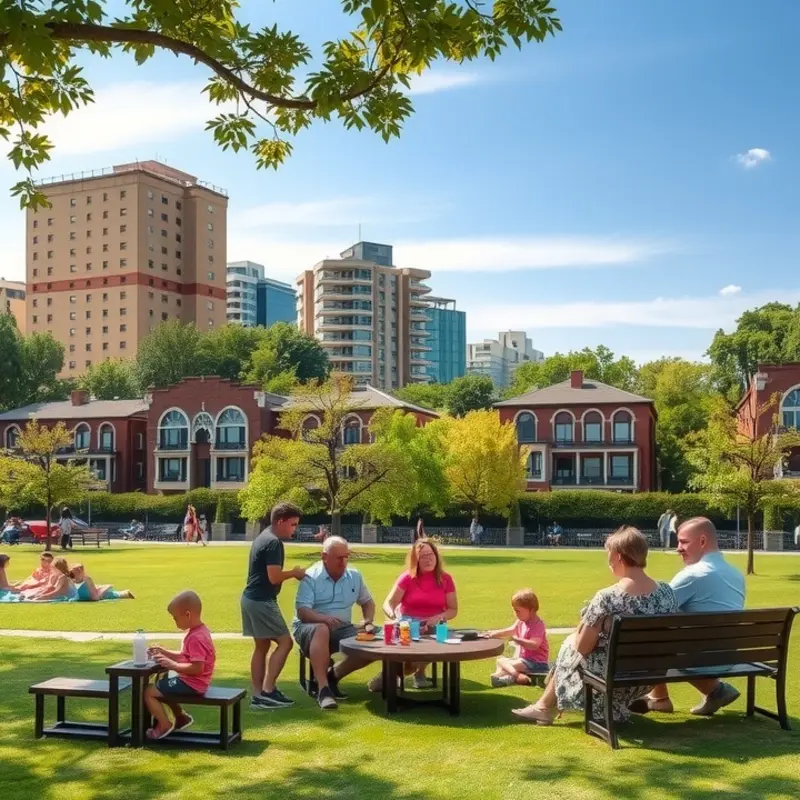
Living in walkable neighborhoods provides residents with numerous advantages, promoting community engagement, health, and environmental sustainability. Picture a neighborhood where residents stroll to local cafes, shop at nearby grocery stores, and chat with neighbors during their evening walks. Such environments foster vibrant communities that thrive on interconnectedness.
Community engagement naturally flourishes in walkable neighborhoods. Residents often encounter each other on the streets, at local parks, or during community events. These regular interactions strengthen social bonds and establish a robust support network. Anna, a resident of a walkable neighborhood in Chicago, shares, “I love how I’ve gotten to know my neighbors just by walking around. We don’t just live next to each other; we know each other.”
Health benefits naturally stem from residing in a walkable area. Convenient access to amenities encourages residents to walk or cycle instead of driving. This active lifestyle reduces the risk of chronic diseases, aids weight management, and improves overall well-being. According to a study by the American Journal of Preventive Medicine, people who live in walkable neighborhoods are likely to achieve their recommended daily physical activity.
Beyond individual health, the environmental impact of walkable neighborhoods cannot be overstated. With fewer cars on the road, there is a significant reduction in carbon emissions. Residents contribute to a cleaner atmosphere simply by choosing to live in such areas, making these neighborhoods pivotal in combating climate change.
For prospective renters interested in settling in a walkable community, it’s essential to maximize the neighborhood’s amenities. Start by exploring local shops and introducing yourself to neighbors at community centers or events. Use digital resources to scout out rentals that fit your lifestyle preferences and budget. Websites dedicated to promoting community engagement can serve as valuable tools for newcomers.
Settling into a new neighborhood also means making your new apartment feel like home. Consider sustainable DIY projects to personalize your space while remaining eco-friendly. These projects can not only enhance your living environment but also spark conversations with neighbors, further embedding you into the community.
Walkability aligns with a philosophy of sustainable and conscious living that many young professionals and families are increasingly embracing. It provides the opportunity for an enriched lifestyle with numerous benefits, supported by a strong community and a healthier environment. So, the next time you contemplate a move, consider stepping out into a walkable neighborhood where community and convenience blend seamlessly.
Final words
Choosing to live in a walkable neighborhood not only enhances your lifestyle but also fosters connections within the community. With a mix of accessible amenities, local charm, and the wellness benefits of active living, the right neighborhood can transform your experience in a new city. So whether you’re moving for work, school, or a fresh start, consider what a walkable area can offer. You’ll find that your next rental is much more than just a place to stay; it is a gateway to a fulfilling urban experience filled with opportunities, friendly faces, and a sense of belonging.

